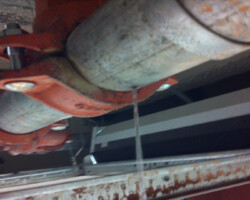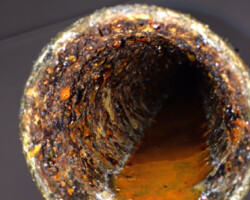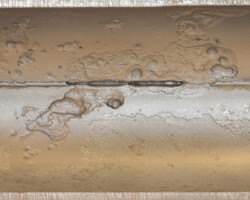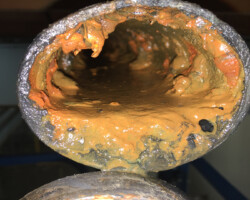Common Issues Found During Fire Alarm Inspections
Common Fire Sprinkler System Problems and How to Address Them
October 22, 2024Fire Sprinkler Maintenance Services in Seattle: Keeping Your System Ready for Action
November 4, 2024So, you think your fire alarm system is in perfect working order? Well, let’s take a closer look. During fire alarm inspections, it’s not uncommon to uncover a myriad of issues that could compromise the safety of your building and its occupants. From faulty equipment to inadequate coverage, and wiring problems to outdated control panels, several potential pitfalls may be lurking behind those innocuous walls. In this blog, we will uncover these common issues and emphasize the importance of prompt resolution with the help of fire alarm maintenance experts.
Faulty or Outdated Equipment
Safety regulations mandate that fire alarm systems always remain well-maintained and fully operational. Faulty equipment encompasses components that fail to function as intended, such as smoke detectors unable to detect smoke or alarm panels that lose contact with the monitoring station. On the other hand, outdated equipment refers to devices that no longer meet current safety standards or have become obsolete due to technological advancements.
Promptly addressing identified faulty or outdated equipment during inspections is crucial. The replacement of such equipment is vital to ensure the fire alarm system can detect fires and alert occupants effectively. This process involves swapping malfunctioning components with new, reliable ones that comply with safety standards. Moreover, updating outdated equipment with modern alternatives can enhance the system’s overall performance and functionality.
Inadequate Coverage or Placement
During fire alarm inspections, a common issue is the inadequate coverage or improper placement of alarm devices. This can greatly undermine the effectiveness of the fire alarm system, endangering lives and property. Here are four reasons why insufficient coverage or placement is a critical concern:
- Signal Insufficiency: Poorly positioned alarm devices increase the risk of missing smoke or fire in certain areas, leading to delayed alerts and responses, elevating the potential for harm and damage.
- False Alarms: Incorrect device placement can trigger false alarms, causing unnecessary evacuations and disruptions. These false alarms may desensitize occupants, reducing their urgency during real emergencies.
- Blind Spots: Improper placement can create blind spots where alarm devices fail to detect smoke or fire effectively. These blind spots compromise fire safety, allowing fires to spread undetected and become harder to manage.
- Regulatory Non-Compliance: Inadequate device coverage or placement may breach local fire codes, resulting in penalties, legal repercussions, and increased liability during fires.
To ensure occupants’ safety and the fire alarm system’s reliability, a comprehensive understanding of the building layout and occupancy needs is essential. Thoughtful planning and precise implementation of device coverage and placement are vital for robust fire detection and timely notifications.
Wiring or Electrical Issues
A common issue that can arise during fire alarm inspections is the presence of wiring or electrical issues. These issues can compromise the effectiveness and reliability of the fire alarm system, putting lives and property at risk. It is crucial to identify and address these issues promptly to ensure the proper functioning of the fire alarm system.
One common wiring issue is damaged insulation. Over time, the insulation surrounding the wires can deteriorate due to various factors such as exposure to extreme temperatures, moisture, or physical damage. Damaged insulation can lead to short circuits, electrical arcing, and even fires. Therefore, it is essential to inspect the insulation regularly and replace any damaged wires promptly.
Another wiring issue that can be encountered is faulty connections. Faulty connections occur when wires are not properly secured or when there are loose or corroded terminals. These connections can result in intermittent or complete loss of power to the fire alarm system, rendering it ineffective.
Malfunctioning or Outdated Control Panel
If your fire alarm system is experiencing malfunctions or if you have an outdated control panel, it is crucial to address these issues promptly to ensure the proper functioning of the system. A malfunctioning or outdated control panel can compromise the effectiveness of your fire alarm system, putting lives and property at risk.
If your control panel is outdated, it may not have the necessary features and capabilities required for modern fire alarm systems. Upgrading to a newer control panel will ensure that your system is equipped with the latest technology and meets current safety standards.
However, before considering an upgrade, it is important to troubleshoot the control panel to identify any underlying issues. This can involve inspecting the wiring, checking for loose connections, and verifying that all components are functioning properly.
Lack of Proper Maintenance and Testing
Neglected maintenance refers to the lack of attention given to the routine upkeep of the fire alarm system. This includes tasks such as cleaning, inspecting, and replacing worn-out components. Over time, dust and debris can accumulate, obstructing the sensors and reducing their effectiveness. Additionally, parts may become worn or damaged, compromising the overall functionality of the system. Without regular maintenance, these issues can go unnoticed and lead to a failure in detecting and alerting occupants of a fire emergency.
Testing negligence involves not performing regular tests and inspections as recommended by the manufacturer and local fire codes. Conducting frequent tests is crucial to ensure that all components of the fire alarm system are functioning properly. This includes checking the sensors, control panel, annunciator panel, and audible and visual notification devices. Failure to perform these tests can result in faulty equipment going undetected, leading to delays or failures in the event of a fire.
Frequently Asked Questions
What Are the Consequences of Having Faulty or Outdated Fire Alarm Equipment?
Faulty or outdated fire alarm equipment can lead to delayed detection, compromised safety, non-compliance, ineffective response, increased property damage, and loss of life. Regular maintenance and updates are crucial for ensuring fire safety.
How Can I Ensure That My Fire Alarm System Has Adequate Coverage and Proper Placement?
To ensure effective fire detection, follow these steps:
– Conduct a risk assessment to identify fire hazards.
– Comply with local codes and NFPA 72 standards.
– Collaborate with fire protection experts for system design.
– Consider occupancy types for device placement.
– Utilize zoning features for faster response.
– Test system functionality regularly for optimal coverage.
What Are Some Common Wiring or Electrical Issues That Can Affect the Functionality of a Fire Alarm System?
Electrical issues like loose connections, short circuits, ground faults, overloading, voltage fluctuations, corrosion, and rodent damage can disrupt fire alarm systems, leading to malfunctions or failure.
What Are the Signs of a Malfunctioning or Outdated Control Panel in a Fire Alarm System?
Signs of a malfunctioning fire alarm control panel include false alarms, inconsistent notifications, display errors, system resetting issues, lack of communication, outdated technology, and visible damage.
To keep your fire alarm system safe and running smoothly, it’s important to understand the common issues that come up during inspections. Don’t put it off—schedule a thorough inspection with certified technicians today to catch and fix any potential problems before they get out of hand.













